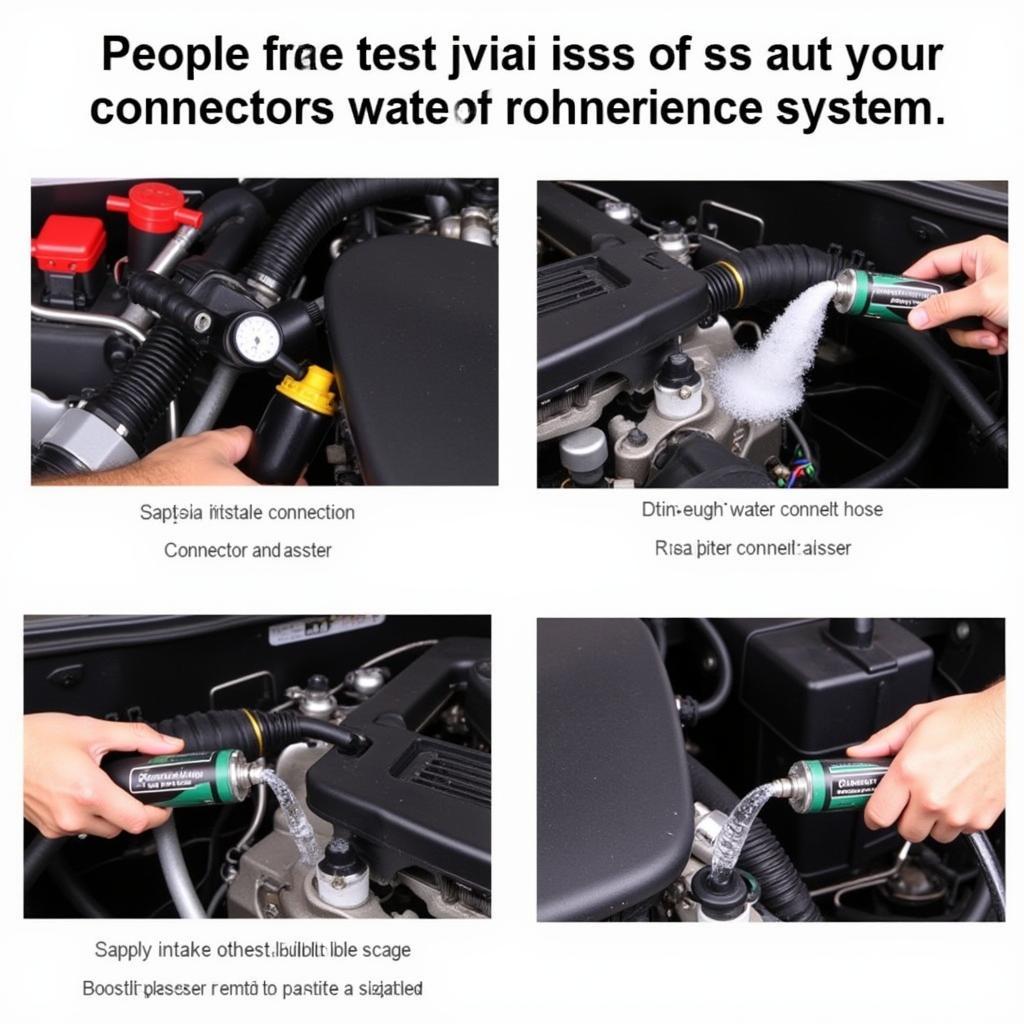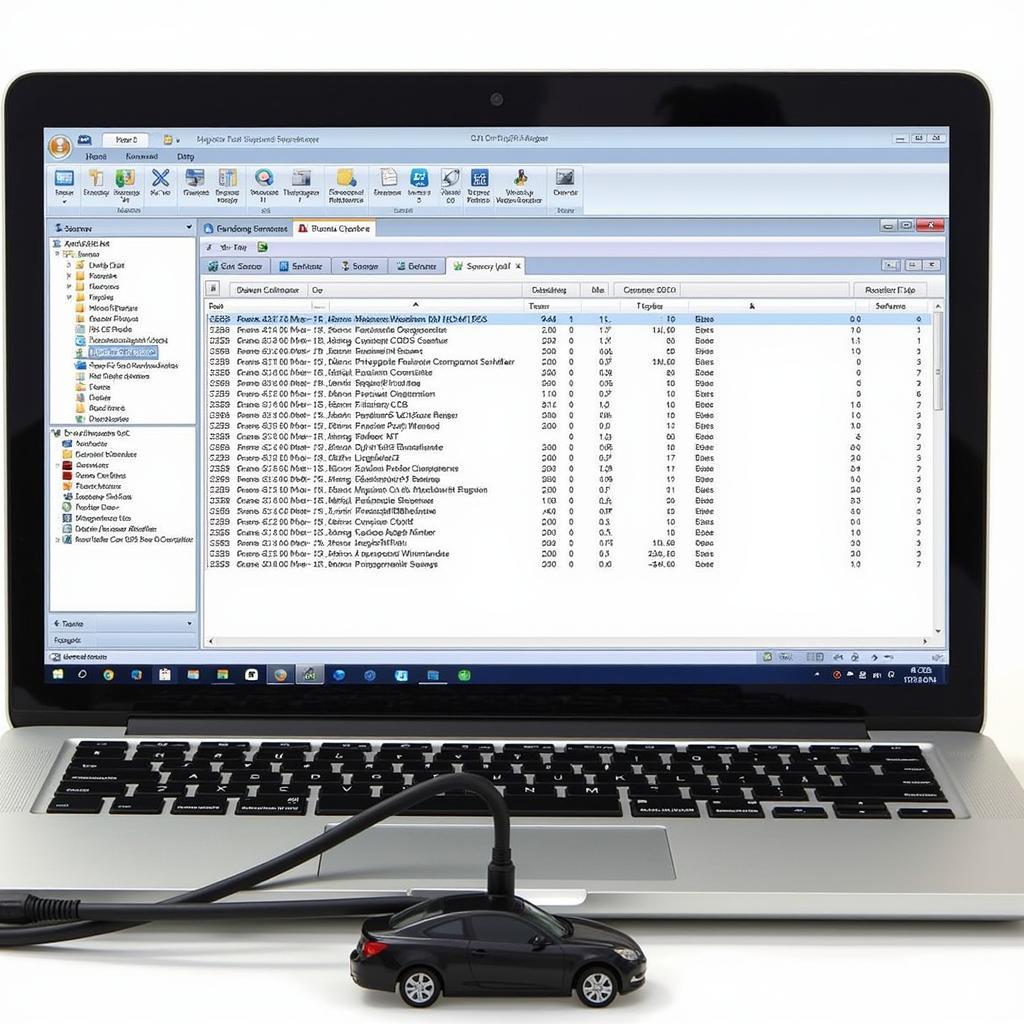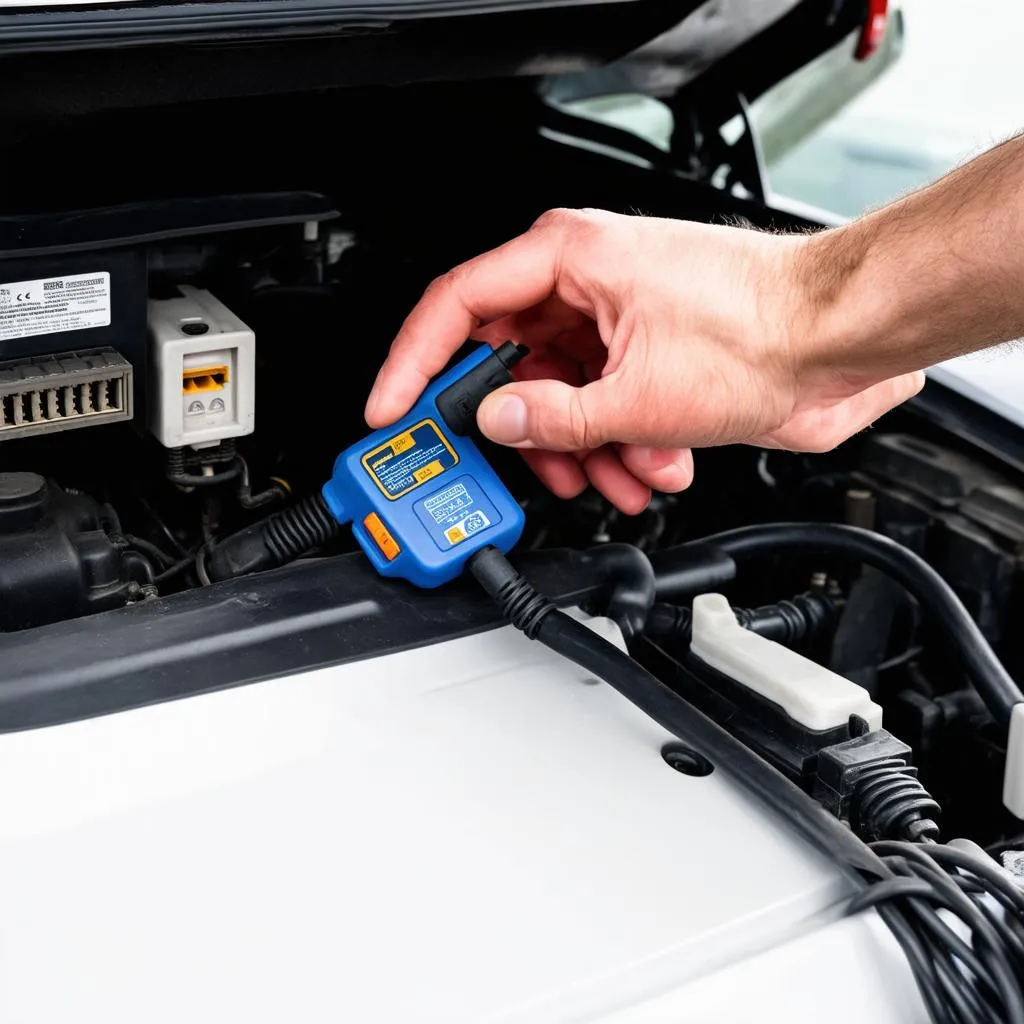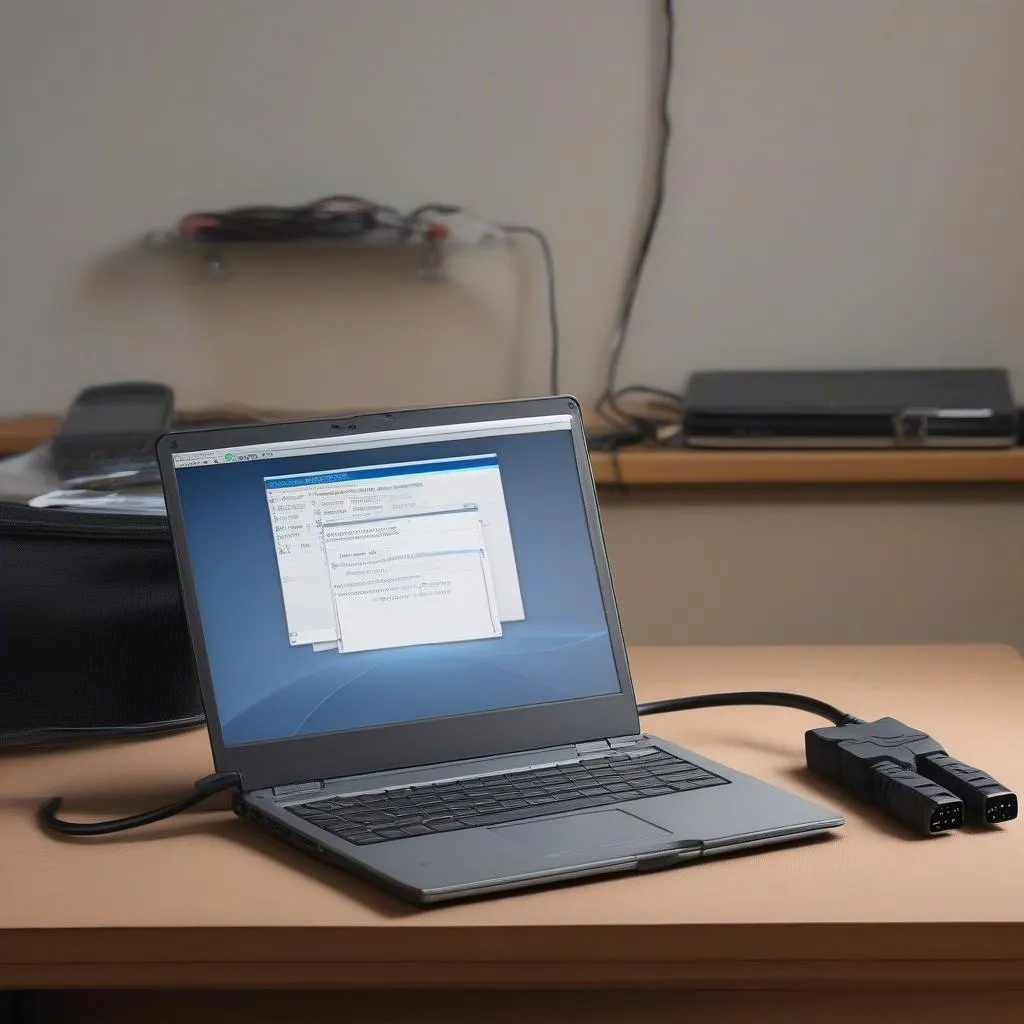The dreaded P0299 code. If you’re seeing this on your VCDS scan, it means your turbocharger isn’t providing the expected boost pressure, resulting in a loss of power and potentially other driveability issues. This article will delve into the P0299 code, exploring its causes, diagnostic procedures, and potential solutions, helping you get your car back to performing at its best.
What Does the VCDS P0299 Code Mean?
The P0299 Diagnostic Trouble Code (DTC) specifically refers to “Turbocharger/Supercharger Underboost Condition.” In simpler terms, the engine’s computer, the Engine Control Unit (ECU), has detected that the intake air pressure is lower than what it should be at a given engine speed and load. This underboost condition can be caused by a variety of issues, from simple leaks to more complex mechanical failures within the turbocharger system.
Common Causes of the P0299 Code
A P0299 code can be triggered by several problems. Understanding these potential causes is crucial for effective diagnosis and repair. Here are some of the most common culprits:
- Boost Leaks: Leaks in the intake system, from the turbocharger outlet to the intake manifold, are a frequent cause of underboost. These leaks can occur in hoses, clamps, or even the intercooler itself.
- Faulty Turbocharger: Internal damage to the turbocharger, such as worn bearings or a damaged turbine or compressor wheel, can prevent it from generating sufficient boost.
- Wastegate Issues: The wastegate regulates boost pressure. A stuck-open wastegate will bypass exhaust gases, reducing boost pressure. Conversely, a stuck-closed wastegate can lead to overboost, but prolonged overboost can eventually cause underboost due to damage.
- Boost Pressure Sensor Issues: A malfunctioning boost pressure sensor can send incorrect readings to the ECU, leading to a false P0299 code.
- Blocked Exhaust System: A restriction in the exhaust system, such as a clogged catalytic converter or a damaged muffler, can impede exhaust flow and reduce turbocharger performance.
- Vacuum Leaks: Vacuum leaks in hoses or connections related to the turbocharger control system can disrupt boost regulation.
 VCDS P0299 Boost Leak Diagnosis
VCDS P0299 Boost Leak Diagnosis
Diagnosing the P0299 Code with VCDS
VCDS (Vag-Com Diagnostic System) is an invaluable tool for diagnosing the P0299 code. Beyond simply reading the code, VCDS allows you to access live data, perform output tests, and log data for more in-depth analysis. Here’s a step-by-step diagnostic approach:
- Scan for Codes: Connect your VCDS cable and scan the engine module for fault codes. Note down any other codes present, as they may be related.
- Check Live Data: Monitor boost pressure readings in real-time while driving the car. Compare the actual boost pressure to the specified boost pressure. This can help pinpoint the issue.
- Inspect for Leaks: Perform a visual inspection of all intake and vacuum hoses, looking for cracks, loose connections, or signs of damage.
- Pressure Test the Intake System: Use a pressure tester to check for leaks in the intake system.
- Test the N75 Valve: This valve controls the wastegate. Use VCDS to perform an output test on the N75 valve to ensure it is functioning correctly.
- Check the Wastegate Actuator: Inspect the wastegate actuator for proper movement and ensure it’s not stuck or binding.
- Inspect the Turbocharger: If other checks don’t reveal the problem, the turbocharger itself may be faulty. Check for shaft play and signs of damage.
 VCDS P0299 Live Data Analysis
VCDS P0299 Live Data Analysis
Fixing the P0299 Code
Once you’ve identified the cause of the P0299 code, you can begin the repair process. Here are some common solutions:
- Repair Leaks: Replace any damaged or leaking hoses, clamps, or intercooler components.
- Replace the Turbocharger: If the turbocharger is faulty, it will likely need to be replaced.
- Repair or Replace the Wastegate: A faulty wastegate or actuator will need to be repaired or replaced.
- Replace the Boost Pressure Sensor: A malfunctioning sensor will need to be replaced.
- Clear Exhaust Blockage: Address any restrictions in the exhaust system, such as a clogged catalytic converter.
- Repair Vacuum Leaks: Replace any damaged or leaking vacuum hoses or connections.
Conclusion: Taking Control of Your P0299 Code with VCDS
The VCDS P0299 underboost code can be frustrating, but with a systematic diagnostic approach, you can effectively identify and resolve the underlying issue. Using VCDS alongside a thorough understanding of the turbocharger system, you can restore your car’s performance and avoid costly guesswork. Remember to always consult your vehicle’s specific repair manual for detailed procedures and torque specifications.
FAQ
- Can I drive with a P0299 code? While you can technically drive, it’s not recommended. Reduced power and potential further damage can occur.
- Is the P0299 code always related to the turbocharger? While it often is, other related components can also cause this code.
- How much does it cost to fix a P0299 code? The cost can vary greatly depending on the cause. A simple leak might be inexpensive, while a turbo replacement can be costly.
- Can I fix a P0299 code myself? If you’re mechanically inclined, some repairs, like replacing hoses, can be done DIY. However, more complex issues may require professional help.
- How can I prevent the P0299 code in the future? Regular maintenance, including air filter changes and checking for leaks, can help prevent this code.
Need expert assistance with your VCDS P0299 code? Contact us via WhatsApp: +1 (641) 206-8880, Email: CARDIAGTECH[email protected] Or visit us at: 276 Reock St, City of Orange, NJ 07050, United States. Our customer support team is available 24/7. We also offer services related to other trouble codes such as P0300, P0420, and more. Check out our other articles on CARDIAGTECH for more helpful diagnostic and repair tips.


